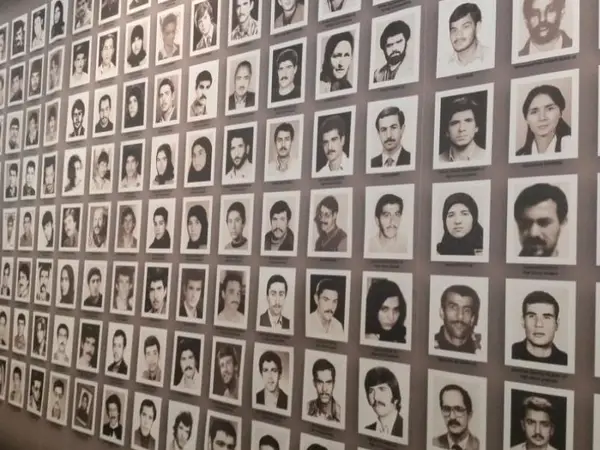Evidence being given in the Stockholm trial of Hamid Nouri (Noury) implicates him as a judge and torturer in the 1988 wave of prison executions in Iran.
Twelve plaintiffs have since August 10 given testimony against Nouri (Noury), who has been charged under universal jurisdiction with “war crimes, crimes against humanity, torture, and participating in the continued crime of refusing to return the bodies of executed prisoners to their families.”
Plaintiffs and witnesses have said Nouri, known to prisoners as Hamid Abbasi, was directly involved in 1988 in torturing, executing and secretly burying thousands of prisoners, mostly members of the Mujahedin-e Khalq Organization (MEK), at Gohardasht prison in Karaj where they say Nouri, then 27, was a judge.
Nouri, who was arrested in 2019 at Stockholm airport when apparently arriving to visit relatives, denies any connection with the executions.
Nouri, now 60, interrogated the prisoners and mocked them, Fereydoun Najafi-Aria told the court Friday. Najafi-Aria, who lives in Australia, explained to the court that he was arrested in 1981, aged 18, and sentenced to 15 years in prison.
Nouri interviewed MEK prisoners in prayer halls at Gohardasht and Evin prisons, Najafi-Aria alleged: "We would sit three meters away from him, without blindfolds, and watch. He would ask prisoners if they still supported [the MEK]. He would mockingly tell them they would be arrested and killed if they were released and continued political activity.”
Najafi-Aria told the court he found out about mass executions of prisoners on August 9, 1988 when a prisoners informed others by tapping on the wall in Morse code: "Khomeini has sent a commission. They want to kill everyone."
An ad hoc judicial committee formed after a fatwa from then Iranian leader Ruhollah Khomeinicame to be known among prisoners as the ‘Death Commission.’ Khomeini used the word ‘hypocrites,’ a term widely used by Iranian officials and media to refer to the MEK, which carried out a wave of bombings in Iran and allied with Saddam Hussein during the 1980-88 war.
Amnesty International has analyzed evidence linking several Iranian officials to the massacre, including President Ebrahim Raisi (Raeesi), who was then deputy prosecutor in Tehran. When asked in June about the 1988 executions, Raisi told reporters he had always defended national security and cited acts of violence carried out by the MEK, which was delisted by the United States as a ‘foreign terrorist organization’ in 2012 and moved to a new base in Albania from Iraq by the US in 2016.
The MEK’s National Council of Resistance of Iran, which always highlights the executions, in 2019 named over 5,000 members as victims in a booklet ‘Crimes Against Humanity.’
Another plaintiff, Ahmad Ebrahimi, told the court Tuesday that he saw Nouri in 1988 at Gohardasht prison. Ebrahimi, who had been arrested in 1981 during a meeting with another MEK member, said he was ordered to denounce the MEK in writing.
"I was sat in the narrow corridor in front of the Commission's room to write. I wrote that I denounced 'the hypocrites'. Hamid Abbasi came and stood over my shoulder…I had pushed my blindfold up a little to write so I couldn't see Hamid Abbasi [over my shoulder] but I knew his voice well and recognized it.”
Ebrahimi told the court Nouri then addressed him. "You dirty hypocrite! By hypocrite you mean us! You must make it clear who you actually mean.”
Ebrahimi told the court that he had found out from other prisoners in the same corridor known as the ‘Death Corridor’ that those who did not repent were being executed, so the next time he wrote a denunciation letter in vague terms to save his life.
